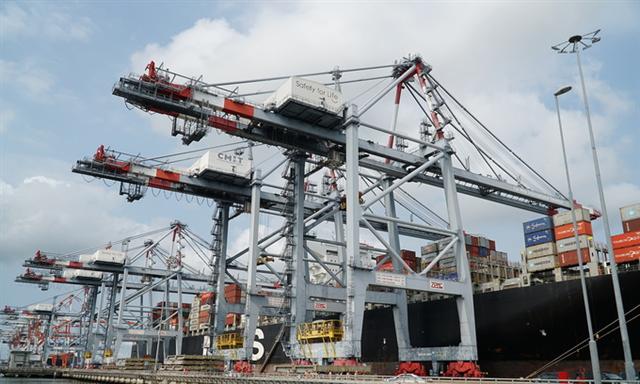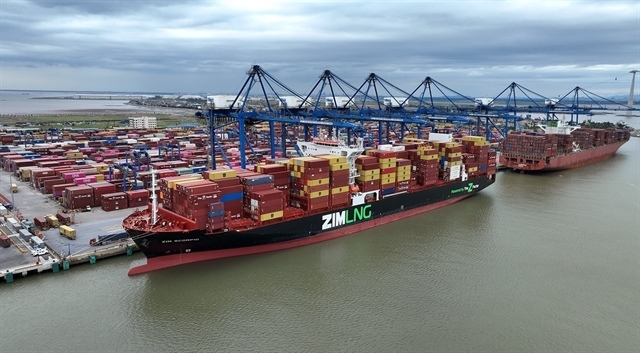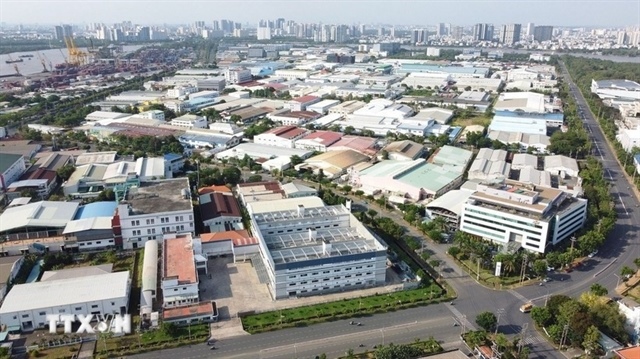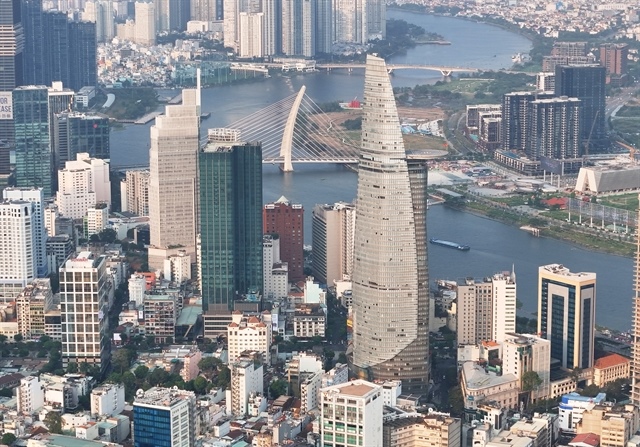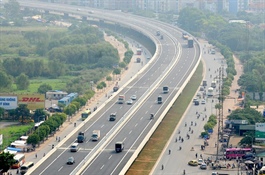OECD wants Vietnam to open up transport sector to foreign investment
OECD wants Vietnam to open up transport sector to foreign investment
The Organization for Economic Cooperation and Development has called for Vietnam to open up its transport sector to foreign companies, especially roads and waterways.
Containers being loaded and unloaded at the Cai Mep-Thi Vai Port in the southern province of Ba Ria Vung Tau on March 30, 2021. Photo by VnExpress/Dang Khoa
|
In a recent report ‘OECD Competition Assessment Reviews: Logistics Sector in Vietnam’, the association of rich countries has 36 recommendations for removal or amendment of legal provisions by Vietnam.
It blamed these provisions for increasing logistics costs, causing difficulties for businesses and making it hard for Vietnam to fully tap its transport sector potential.
Vietnam’s logistics costs as a percentage of GDP was estimated at 18 percent in 2017, much higher than the rate of 8.5 percent in Thailand and similar rates in developed countries.
Stakeholders said transportation costs account for 30-40 percent of production costs, and this negatively affects the competitiveness of Vietnamese goods and services, the report said.
A foreign investor wanting to enter road or inland waterway transport services must sign a cooperation agreement or enter into a joint venture with a Vietnamese partner, and is not allowed to own more than a 51 percent stake. According to the OECD, this keeps out foreign companies, potentially leading to higher prices and lower quality.
"Vietnam should focus on enhancing liberalization efforts in the transport sector, which remains partly off-limits to foreign investors, holding back potential economy-wide productivity gains," the report said.
The OECD wants Vietnam to progressively relax foreign equity limits toward allowing 100-percent foreign ownership in the long term.
Other provisions have also caused freight costs to surge, the report said. For example, to provide road transport services beyond a 300-kilometer distance, operators need to own at least 10 vehicles if their head office is situated in a centrally-run city, five if in other localities and three if in poor districts. This could deter small and medium-sized enterprises from entering the market, increasing operating costs, the report said.
The OECD wants Vietnam to remove this provision, pointing out that in the U.S 55 percent of freight companies have only one vehicle.
Vietnam has 41,900 kilometers of navigable inland waterways, 224 river ports and 8,000 landing stages. Inland waterways account for 17.8 percent of cargo movements. According to experts, this mode of transport is more fuel efficient than others and could be a way to address the potential increase in transport needs.
To provide shipping services within Vietnam, a foreign vessel needs to be registered in the country and its owner needs to have an office in the country.
The OECD said this provision could restrict foreigners’ access to the market.
Domestic cargo transport by sea is limited in Vietnam, partly due to a lack of service providers. The Vietnam Maritime Corporation is one of the few operators with marine shipping services between the north and south.
The OECD has recommended three options: opening the domestic shipping market to foreign competition, amending the provisions to allow foreign ships to carry their own cargo and other foreign cargo domestically, and allowing international shipping firms to operate on specific routes.
For ports, there are minimum and maximum container charges, pilot charges, port charges, and tugboat charges.
The OECD said fixing minimum and maximum fees instead of allowing operators to adjust to supply and demand could lead to inefficient outcomes.
It called for removing the minimum and keeping maximum rates, which should enable operators to recover their costs along with a reasonable rate of return.
"The government could undertake a holistic review of its national strategy on ports and of the existing network of ports. Among other factors, the review could consider the benefits of inter-port competition while recognizing the risks created by excess capacity."


